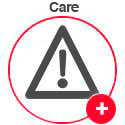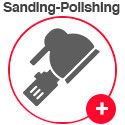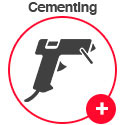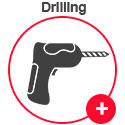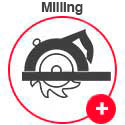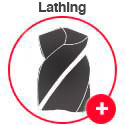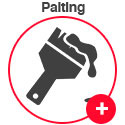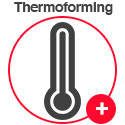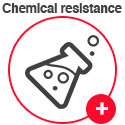How to paint Vical Acrylic sheet
The sheet can be easily pointed and so it’s possible to create an unlimited variety of decorative products.
It doesn’t differ from the painting of other materials as wood or metals.
As another material the pointing requires an appropriate technique to get a good finishing of the product.
Before painting it is necessary to clean the acrylic surface. Possible impurities that can even be invisible can make the process of painting fail.
The cleaning solvents should be carefully selected to avoid the crazing process on the material surface. The solvents that must not be used are: chloride hydrocarbons, ketone, toluene, Xilene, thinners, and others.
All these products produce crazing in the acrylic surface.
Cleaning of the surface before painting
If protection paper is still adherent to the acrylic surface, soak a cloth with naphtha and clean the dirty surface of the acrylic then remove with a diluted solution of detergent in water. It can also be cleaned with a cloth soaked in a solution of isopropyl alcohol at 99 % rinse with eater, preferably distillated water to prevent stains.
Surfaces with pollutant soluble in oil
Clean with an aqueous detergent solution and rinse thoroughly.
Superficie con contaminantes solubles en aceite
Use a hydrocarbon solvent like eg: naphtha, kerosene, continuing with a solution of detergent and then rinse with plenty of water.
It’s very important that the painting chosen will be compatible with the acrylic. The vast majority of home-painting and the ones on a water base scarce adherence with the acrylic.
Some paintings have organic solvents that can provoke crazing in the acrylic.
For all this it is necessary that the manufacturer specify that the painting is compatible with the acrylic.
If the sheet to be painted is transparent and the use is external, its advisable to use the painting on the inner face because the acrylic by itself filters the UV rays prolonging the life of the painting.
The painting can be applied with a brush or spray there are special painting for each type of application. The coating must have minimum thickness of 1 mm to get more durability.
If the material is going to be thermoformed after the painting do not high up the temperature of the sheet above 154 C.
It’s advisable to apply on painted surfaces a coat of transparent painting to protect the surface of the abrasion caused by the handling and cleaning.
